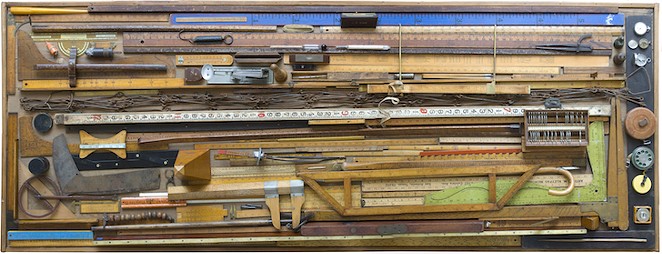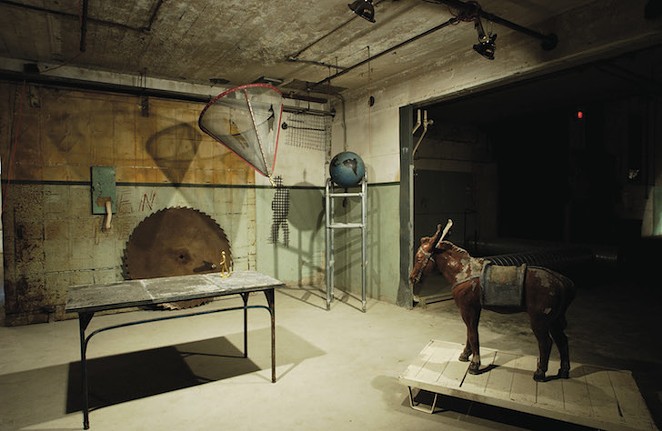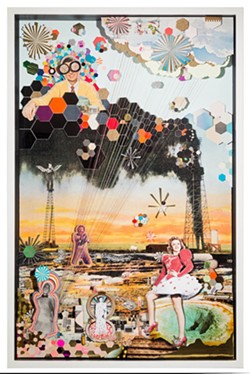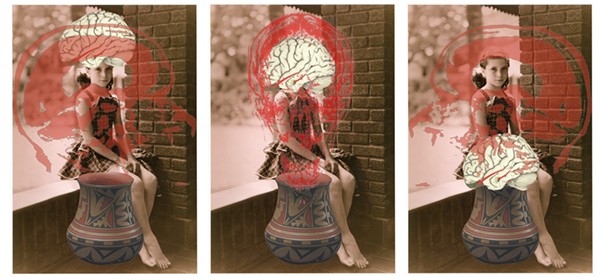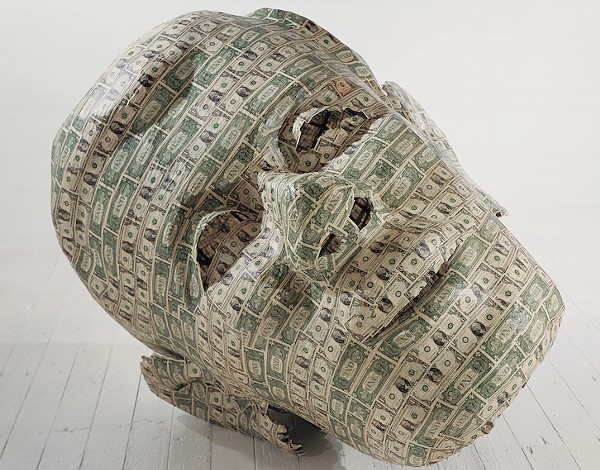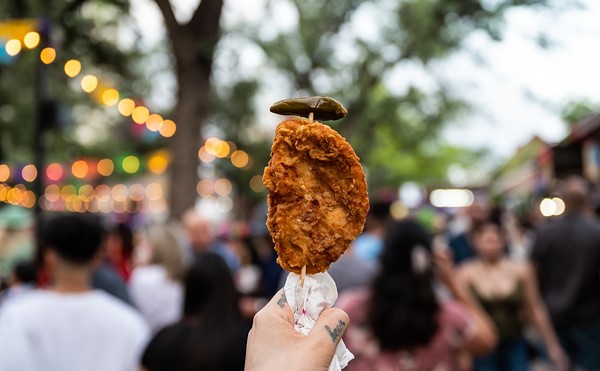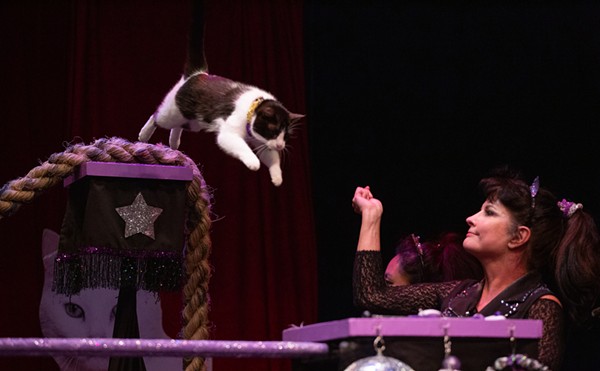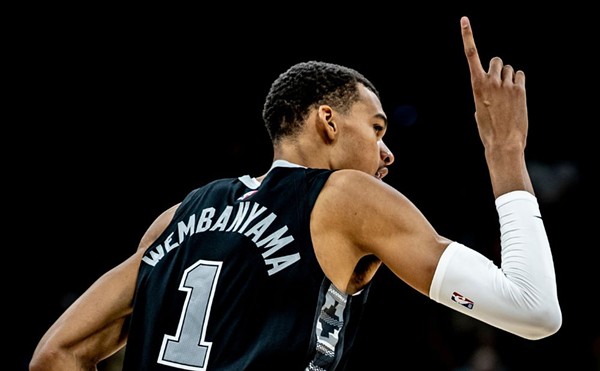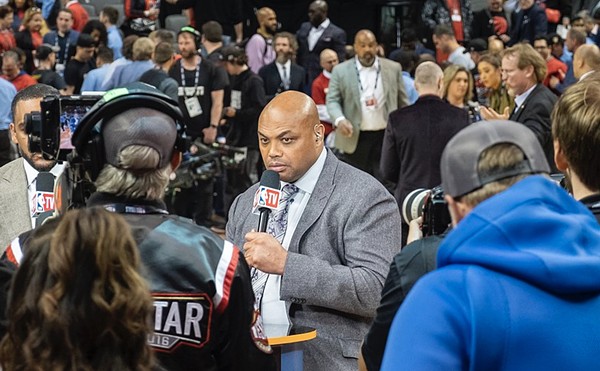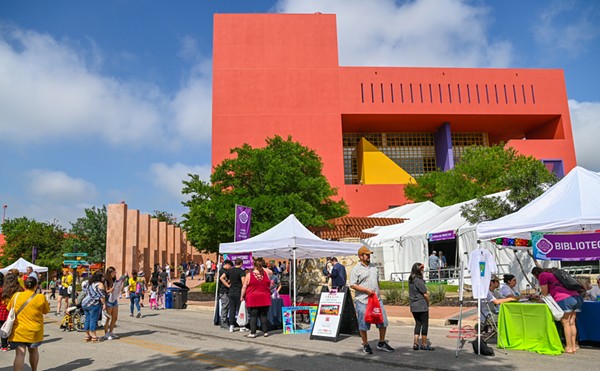For many, the term “found object” may not conjure much more than hazy memories of unearthing oddities while mowing the yard or combing the beach. But for visual artists, the ubiquitous found object can hold a much deeper meaning — and a much looser definition. Encompassing the organic (tree branches, shells, bones), the industrial (tools, nails, salvage), the nostalgic (photographs, magazine clippings, album covers) and lots more in between, these objects might be “found” in the traditional sense (on walks, in the trash, etc.) or purchased in junk shops, flea markets, even on eBay. Whether used as building blocks for immersive environments or puzzled into mysterious little visions of the past, these upcycled materials may have little more in common than an unexpected afterlife.
In his new book The Art of Found Objects (published by Texas A&M University Press), Houston native and McNay Art Museum assistant librarian Robert Craig Bunch employs this age-old practice as a common thread connecting 60-plus Texas artists — including six San Antonians (Danville Chadbourne, Marilyn Lanfear, Ken Little, Kelly O’Connor, Henry Stein and Gary Sweeney) and many others with creative ties to Alamo City institutions such as Artpace and Blue Star Contemporary. Jumpstarted in 2010 by a “near convergence of exceptional Houston shows,” Bunch’s book is essentially a compilation of interviews informed by visits to exhibitions, homes and studios.
At just eight pages, the introduction to The Art of Found Objects holds surprising weight on its own. In addition to placing “the appropriation of found materials for artistic purposes” in a historical context that dates back to cave paintings, it touches on the most common artistic destinations for found objects (two dimensional collage, three-dimensional assemblage, and a gray area in between) and cites a number of late artists worthy of further investigation. Beyond the obvious — and essential — inclusion of Port Arthur native and modern art icon Robert Rauschenberg (1925-2008), Bunch sheds light on the likes of Charles A. A. Dellschau (1830-1923), a Prussian-born Houston butcher who’s counted among America’s earliest outsider artists. Long after Dellschau’s passing, his notebooks — filled with collaged and watercolored “aeronautical fantasies” — were fortunately rescued from a trash heap and distributed among museums. Equally as intriguing, the so-called “Unholy Trio” of friends David McManaway (1927-2010), Jim Love (1927-2005) and Roy Fridge (1927-2007) lived in Dallas, Houston and Port Aransas, respectively, and found common ground building earthy constructions from scavenged materials. Bunch cites the 1988 San Antonio Museum of Art exhibition “The Poetic Object” among the trio’s many together.
Writing in a refreshingly conversational tone, Bunch also uses the introductory pages to explain the selection of artists (admitting that dozens “worthy of inclusion are missing”) and the way their interviews were conducted — all via email with the exception of Bert Long, Forrest Prince, Roberto del Rio and Vincent Hannemann. “I wanted time to compose thoughtful questions, and I wanted the artists to have time to prepare thoughtful answers requiring a bare minimum of editing,” Bunch explains. While there’s no shortage of thoughtful questions and answers throughout The Art of Found Objects, the emailed exchanges read as disjointed and choppy at times. Presented without individual introductions and only minimal background information (place of birth, birth year, city of residence and the date Bunch received their answers), starting to read one of these artist Q&As can feel like walking in on a conversation already in progress. For instance, Kelly O’Connor’s Q&A begins with the question, “What do you mean by ‘calcification’ of objects? How do you employ this concept?” Although they’re not set up any differently, the Q&As Bunch conducted in person maintain a more organic tone thanks to conversational digressions and certain questions acting as follow-ups to previous responses.
Shaky starts aside, the Q&As are still approachable and full of insight into practice and process. As for the author’s point to give artists time to formulate responses, it seems to have paid off in the form of charming personal anecdotes — many of which have little to do with found objects at all. We learn, for example, that Dario Robleto has a fascination with The Guinness Book of World Records; Ken Little grew up hand-painting china with his grandmother; Danville Chadbourne was “lucky enough” to travel through rural Mexico with his entomologist father; Gary Sweeney made a living as a sign painter for a few years; and Julie Speed decided to buy a house in Marfa after witnessing a man there diverting traffic around a “dinner-plate sized tarantula that was crossing the road.”
Easily the most irksome thing about The Art of Found Objects is the way the art itself is presented. Given that each artist is represented by one single image (or, in the case of Ann Harithas, a triptych), it’s a shame they’re not larger. (Almost all are smaller than an average postcard.) For an art book about artists, many of whom are known for detail-oriented and large-scale works, The Art of Found Objects appears more concerned with words than art. With numerous pages — and even two-page spreads — devoid of images, it’s easy to lose visual reference and interest. Stranger still, nearly half the Q&As end in the middle (or even near the top) of a page, leaving ample blank space for additional images (or at least a much larger one to begin with). Maybe it’s a play for minimalism or “breathing room,” but the visually minded among us may see it as a missed opportunity.
On Thursday, October 27, the McNay hosts a book signing with Bunch outside the museum store. Free, 6-7pm, McNay Art Museum, 6000 N. New Braunfels Ave., (210) 824-5368, mcnayart.org.

